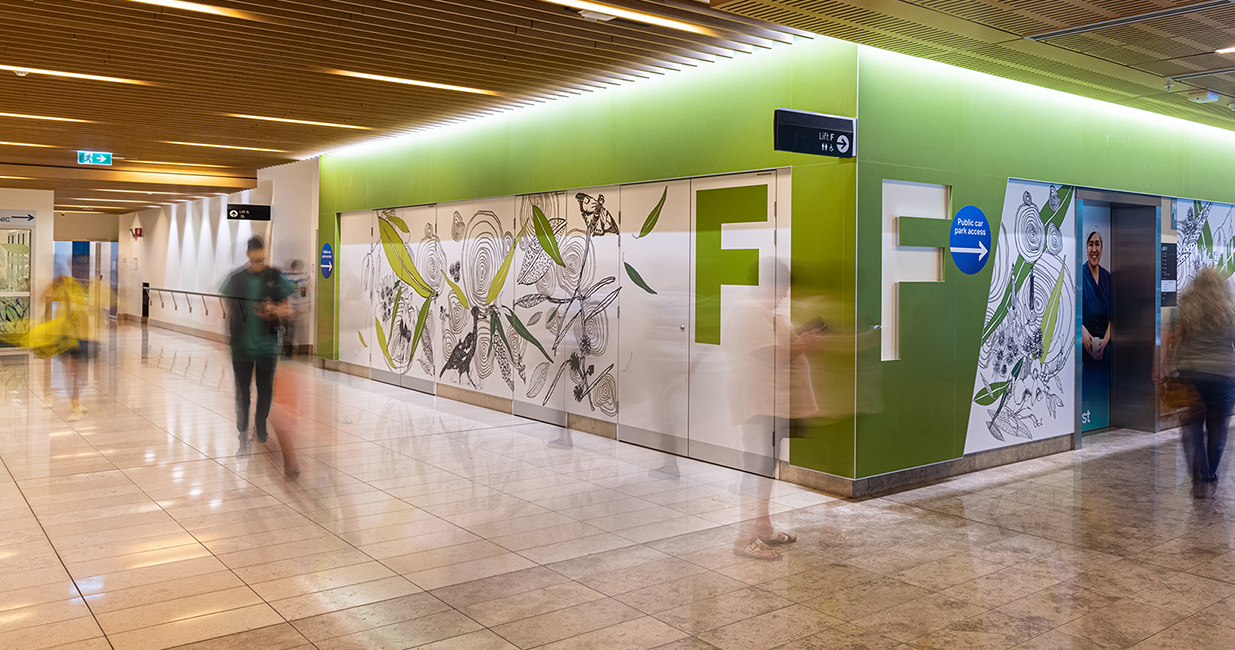
Healthy appetite for sustainability loans supports Royal Adelaide Hospital refinancing
Celsus – the commercial operator of the Royal Adelaide Hospital under a public-private partnership – used the first full refinancing of its syndicated debt facility to price what it believes is the world’s largest use-of-proceeds sustainability loan. The loan incorporates green and social aspects and the issuer says the labelled format helped it attract a book of more than double the required volume of A$2.2 billion.
Public-private partnership (PPP) funding for Royal Adelaide Hospital (RAH) was first completed in 2011. Celsus has since extended its original funding terms twice so this is its first full refinancing. The new facility has four-year tenor and closed on 14 July 2021.
Refinancing via a sustainability loan made sense for Celsus given the nature of the RAH asset, notably that it is an existing facility with significant green as well as social credentials rather than one pursuing a green or social transition. RAH is the first large hospital complex in Australia to secure a four-star green star – healthcare “as built” rating from the Green Building Council of Australia (GBCA).
“The hospital’s rating is based on its sustainable design and construction as well as its operation, fit out and positive impact on staff and patients,” a Celsus statement explains. RAH has 700 overnight beds including 40 mental-health beds, as well as 100 same-day beds. It is a tertiary/quaternary facility and the largest clinical teaching facility in South Australia.
The site also has 3.8 hectares of landscaped environment with more than 70 internal themed courtyards and sky gardens across nine levels including features such as the Spinal Garden and Aboriginal Garden, creating a 1.6-hectare footprint of green space within the hospital. RAH has incorporated high-efficiency water fittings as well as capturing and recycling water, and has an on-site cogeneration system for water heating.
“The sustainability loan aligns with a number of things we have already done, for instance the GBCA rating,” explains Di Mantell, Celsus’ Adelaide-based Chief Executive. “We also wanted to draw on some of the wider aspects we are reporting on, such as the commitment to managing biodiversity and the role of social infrastructure.”
These features made a use-of-proceeds (UOP) structure the natural choice among sustainable-finance instruments for Celsus. The loan aligns with the Green Loan Principles and the Social Loan Principles (SLPs).
The fact that Celsus was aligning its debt with existing assets rather than forward-looking KPIs did not mean the process was simple, however. Mantell tells KangaNews the borrower went through its extensive refinancing on a relatively tight timeline – it commenced the process in February this year – that also had to include such aspects as engaging with and satisfying the needs of the second-party opinion provider, DNV Business Assurance Australia, and defining alignment with the UN Sustainable Development Goals.
Fully refinancing a substantial PPP has challenges of its own even beyond the sustainability aspect. Celsus was keen to rationalise a banking group that originally ran to 28 financiers, as Mantell explains that it is “hard to maintain really strong relationships with this many lenders”. Some banks naturally fell by the wayside due to changes in the nature of their Australian businesses since 2011, and Celsus eventually landed on an 18-strong group for the syndication.
UOP OPTION
Offering a sustainability loan actually added to the difficulty of winnowing the banking group, since so many lenders are keen to acquire sustainability-aligned assets. Selvaratnam says Celsus received more than A$4 billion (US$2.9 billion) of interest for its A$2.2 billion facility.
The KPI-based sustainability-linked loan (SLL) has been the vogue debt instrument of recent months. But the nature of PPP projects lends itself to UOP structures more than it does other forms of sustainable debt, according to Tania Smith, Melbourne-based director, sustainable finance at ANZ – which acted as sustainability coordinator on the Celsus facility alongside Commonwealth Bank of Australia (CBA).
“The PPP model involves large infrastructure assets with government involvement and substantial sponsor consortia, and this means UOP definitely makes more sense. Agreeing things like KPIs in a sustainability-linked structure across big groups like these would be very hard to achieve,” Smith explains.
Selvaratnam says the borrower had solid support from its investor base – comprising Aberdeen Standard Investments, AMP Capital, InfraRed Capital Partners, The Infrastructure Fund, HRL Morrison & Co and MM Capital Partners – to develop a sustainability loan “that would provide a strong signal of the borrower’s commitment to incorporating environmental, social and governance [ESG] aspects into its overall strategy framework and the business planning process.”
Opting for UOP debt funding rather than a sustainability-linked structure does not mean RAH has reached an end state on ESG, however. “Several initiatives are being driven by our operations director, Damien Breen, to ensure we meet our commitments,” Mantell reveals. “These initiatives range from a reduction in greenhouse-gas emissions through sustainable use of onsite generation systems to enhanced ESG reporting to enable better management of resources.”
“From a pure financing perspective, we did not get a direct pricing benefit from the sustainability structure – but nor were we seeking one. The purpose was to attract volume, which it certainly did. As soon as banks knew we were going down this path there was a lot of interest in providing liquidity.”
MARKET CONTEXT
The borrower says the scale of demand its sustainability loan attracted gave it leverage in the terms and conditions process. Meanwhile, Smith says the level of demand banks are exhibiting for UOP assets means deals like Celsus’s are likely to receive pricing that is “not necessarily better but certainly competitive”.
Charles Davis, managing director and head of sustainable finance and ESG at CBA, adds: “Against the backdrop of most banks setting sustainability targets and considering their own ESG risk exposures, clients in a strong ESG position are likely to see benefits in bank appetite, pricing and exposure. While a GSS [green, social and sustainability] structure does not have explicit or defined pricing benefit, the strong demand for GSS products has started to lead to pricing compression in loan markets.”
Selvaratnam comments: “From a pure financing perspective, we did not get a direct pricing benefit from the sustainability structure – but nor were we seeking one. The purpose was to attract volume, which it certainly did. As soon as banks knew we were going down this path there was a lot of interest in providing liquidity.”
Celsus’s goals were wider than pricing. The borrower wanted to take a leadership position in green and social loans and gain recognition as a project that achieves social and environmental outcomes. The aim is for RAH to present tangible and genuine environmental and social benefits in line with sustainable-finance standards.
Pricing may not have been a major motivation on this occasion, but Mantell adds: “The SLPs only came into effect in April this year so we are talking about a new product. This definitely drove market interest – and the interest and competition in turn brought about the ability for Celsus to achieve more competitive terms. Next time around – when the product is more established and we are in a different position as a borrower – I think there is every chance we will get incrementally better pricing.”
“At this moment in time there is large focus on the SLL space given the wider applicability of this structure. While UOP structures are limited to specific assets, we expect to see more eligible projects as Australia’s economy continues to focus on ESG alignment. There is definitely a bright future for these structures.”
FUTURE OPTIONS
Whether Celsus’s future funding will include capital-market forays – and, if so, whether these will be in some form of sustainability-labelled format – remains to be seen. Selvaratnam points out that it is “still very early days” for the new phase of RAH’s financing strategy and that it very happy with its current positioning, though he also notes that it now has a number of options on the table for future funding.
The company’s lenders, meanwhile, believe the RAH facility demonstrates that UOP structures will continue to provide value in the loan market even as the SLL gathers momentum.
Davis tells KangaNews: “I think we will see both areas of this market grow and evolve. At this moment in time there is large focus on the SLL space given the wider applicability of this structure. While UOP structures are limited to specific assets, we expect to see more eligible projects as Australia’s economy continues to focus on ESG alignment. There is definitely a bright future for these structures.”
PPPs can reasonably be expected to provide a deal pipeline. Three PPP green loans have priced since late last year: A$280 million for Canberra Metro, A$620 million for Qtectic and A$700 million for Sydney Light rail.
Smith points out that Australia’s longer-term COVID-19 response incorporates a focus on infrastructure that should see a steady supply of new projects and notes that sustainability-aligned funding should be an option for all of them – notwithstanding project complexity – even at greenfield stage.

WOMEN IN CAPITAL MARKETS Yearbook 2023
KangaNews's annual yearbook amplifying female voices in the Australian capital market.











